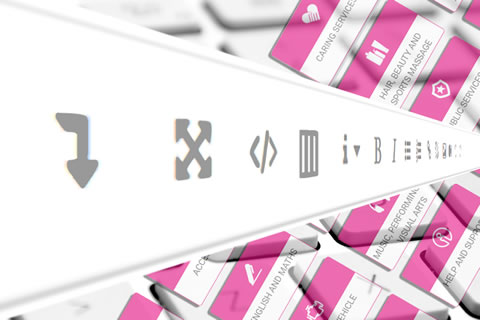What are the Minimum Expectations?
The minimum expectations have been developed by the eLearning Team and the Quality and Standards Team. The purpose of these are to ensure the quality of content available for learners on LearnZone. All members with responsibility for the creation and management of content will carefully observe these standards and ensure a high quality of digital content for our learners to access.
What are the Principles?
The different principles of the minimum expectations are available below. Additionally, further training can be located at the bottom of this article that will support your activities when developing and managing content on LearnZone. Click on the headings or images below to learn more.
Naming ConventionsThe labelling of courses, units or modules must be clear to students. The course full name will appear at the top of each course. The course short name has to be unique and should be a little shorter if possible. When trying to locate a specific course the short name is very important for all users to find and distinguish between courses. |
Course OverviewThe details of each course, unit or module must be clearly displayed to learners in the first section. Course specification documents likely offer the text that can be adapted for this purpose. Ensuring this information has been added will help all users to be able to fully identify a course, unit or module. |
Contact DetailsThe contact details for each unit or course must be clearly displayed on each course, unit or module page. This should certainly include a name and email. However, it may also include office locations and hours of each lecturer involved in delivering the content. The most obvious place for this information is in the first section of each course. |
Content OrganisationContent should be broken down into clear sections and this could include the use of labels to guide learners to activities and resources. All content should be maintained and relevant. Any resources or activities that are no longer relevant should be hidden, removed or archived to a hidden section. |
Section ManagementSections should be logically ordered and visible sections must have some content or purpose. Empty sections should be hidden from students to avoid confusion. Sections no longer required should be permanently deleted. Section names should be reasonable in length so that they fit well into the links on the left of the course page. |
Activities & ResourcesWell-designed courses should contain relevant and up to date activities and resources. LearnZone offers a variety of features to enable you to make content more interactive. Remember any unfinished content should be hidden from students until it’s ready to go live on the course page. Lecturers will still be able to see this, but students will not. |
Assessment BriefsWhere applicable in the qualification and when assessments have been activated, they should be very clearly signposted and in the same location as any supporting resources. Assessment criteria should be very clear and easy to find. Additionally, it should also be clear how students might acquire support with assessments and what they should do concerning appeals and re-submissions. |
Assessment ScheduleWhere applicable for the type of qualification, all titles and dates must be in line with the ProPortal assessment schedule for the qualification and group to prevent any confusion for students or staff members. Students must be clear on the dates of any assessment and staff members may need to update these dates on an annual basis. |
Examination MaterialsWhere applicable for the type of qualification, students should have access to sample exam questions and/or past papers for academic subjects and for vocational subjects exemplar materials could be made available where rules allow. Any links should be easy and quick for students to locate on LearnZone. |
|
Guides
The following guides will help you to improve the content you add to LearnZone. Click on the headings and images to locate the reference and training guides on LearnZone.
Adding FilesAll types of files can be uploaded and accessed through LearnZone, but the student needs to have the correct software to be able to open them. The aims of this short course are listed below. |
Using FoldersA folder allows a teacher to display several course resources together. The resources may be of different types and they may be uploaded in one go, as a zipped folder which is then unzipped, or they may be added one at a time to an empty folder on the course page. |
Adding LabelsA label serves as a spacer on a LearnZone course page. It can be used to add text, images or multimedia in between other resources in the different sections. |
Adding Web LinksA URL (Uniform or Universal Resource Locator) is the official name for a weblink on the internet. You can use the URL resource to provide your students with web links for research, saving the student time and effort in manually typing out the address. |
Using the Text EditorLearnZone uses the Atto plugin to enable you to enter text, images and other media. This powerful little text editor allows you to format your content effectively to meet the needs of your audience. |















